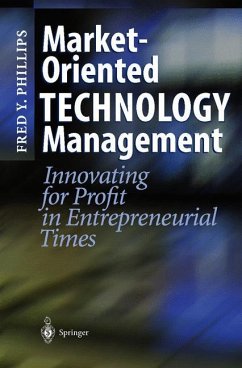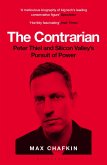Market-Oriented Technology Management develops fundamentals of technology cycles, technology acquisition, core technology management, and technology policy. These principles enable managers to find, acquire and develop technologies, add value to them, and make a profit in the environment of short life cycles and rapid price reductions typical of the electronics, semiconductor, and other globally hypercompetitive industries. Examples from high technology companies illustrate the application of these principles in the context of current industry issues.
The book has been tested in courses for MBA students at the Austin (Texas) Technology Incubator and for managers and executives in Oregon's Silicon Forest.
Every insertion of a new technology or product must be sold, whether the insertion is purely intraorganizational or whether a vendor company is selling to a buyer company. The book's emphasis on marketing is a distinctive feature.
Hinweis: Dieser Artikel kann nur an eine deutsche Lieferadresse ausgeliefert werden.
The book has been tested in courses for MBA students at the Austin (Texas) Technology Incubator and for managers and executives in Oregon's Silicon Forest.
Every insertion of a new technology or product must be sold, whether the insertion is purely intraorganizational or whether a vendor company is selling to a buyer company. The book's emphasis on marketing is a distinctive feature.
Hinweis: Dieser Artikel kann nur an eine deutsche Lieferadresse ausgeliefert werden.
From the reviews: "This book ... would certainly benefit readers, in general and in particular in the tourism industry, from keeping abreast of the knowledge of marketing and managing rapid technological innovations, and how the innovations are diffused ... . A major strength of the book is its in-depth discussion of technology cycles, diffusion of innovation, and marketing technologies using a nontechnical approach. ... The book is well written. With a minimum amount of technical terms being used, the presented ideas are fairly clear to readers at large." (Rob Law and Kenith Leung, Information Technology and Tourism Journal, Vol. 5 (3), 2003) "Development of the subject passes through a general introduction ... . It then moves on to the technology life cycle, identifying and nurturing technologies, acquiring technology to manage and develop, managing risks and concludes with a review of ... the future ... . This is a weighty volume with lots of good material and advice, and each chapter is concluded with a set of exercises ... . it will be useful as a text to support an appropriate course. ... the advice given is good." (David Menzies, The Computer Journal, Vol. 45 (3), 2002) "This book focuses on technology management, taking a decision-making orientation. ... The book provides a brilliant account of the market function and buyer segments. ... The book describes technological risk and its sources well. ... it is an interesting piece of work that includes many useful figures and tables. The book should be recommended to both postgraduate students and technology managers." (Theodoros Papaioannou, Technovation, Issue 22, 2002)








